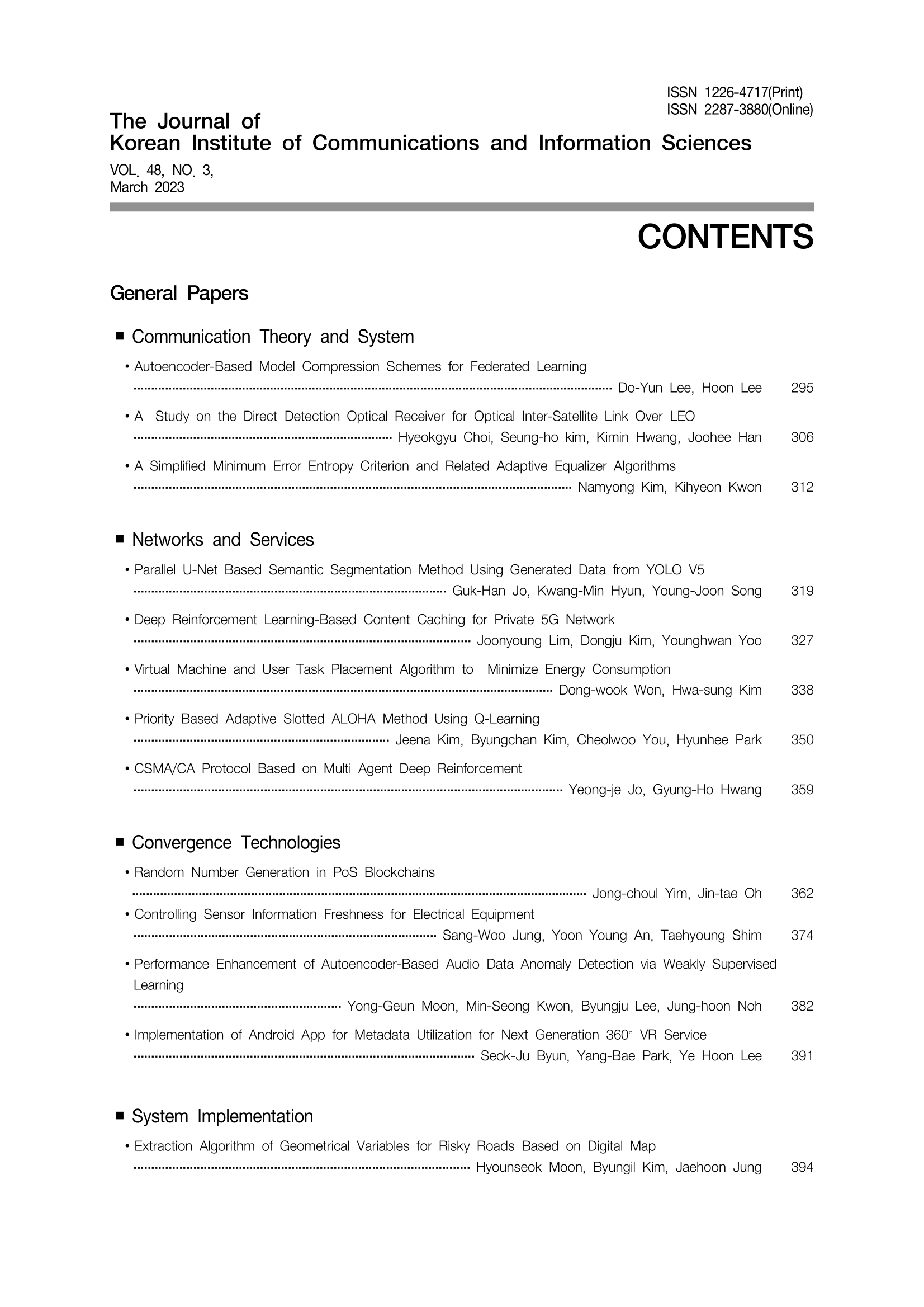CSMA/CA Protocol Based on Multi Agent Deep Reinforcement
Vol. 48, No. 3, pp. 359-361, Mar. 2023
 10.7840/kics.2023.48.3.359
10.7840/kics.2023.48.3.359
PDF Full-Text
Abstract
Statistics
Cumulative Counts from November, 2022
Multiple requests among the same browser session are counted as one view. If you mouse over a chart, the values of data points will be shown.
Multiple requests among the same browser session are counted as one view. If you mouse over a chart, the values of data points will be shown.
|
|
Cite this article
[IEEE Style]
Yeong-jeJo and Gyung-HoHwang, "CSMA/CA Protocol Based on Multi Agent Deep Reinforcement," The Journal of Korean Institute of Communications and Information Sciences, vol. 48, no. 3, pp. 359-361, 2023. DOI: 10.7840/kics.2023.48.3.359.
[ACM Style]
Yeong-jeJo and Gyung-HoHwang. 2023. CSMA/CA Protocol Based on Multi Agent Deep Reinforcement. The Journal of Korean Institute of Communications and Information Sciences, 48, 3, (2023), 359-361. DOI: 10.7840/kics.2023.48.3.359.
[KICS Style]
Yeong-jeJo and Gyung-HoHwang, "CSMA/CA Protocol Based on Multi Agent Deep Reinforcement," The Journal of Korean Institute of Communications and Information Sciences, vol. 48, no. 3, pp. 359-361, 3. 2023. (https://doi.org/10.7840/kics.2023.48.3.359)
Vol. 48, No. 3 Index



